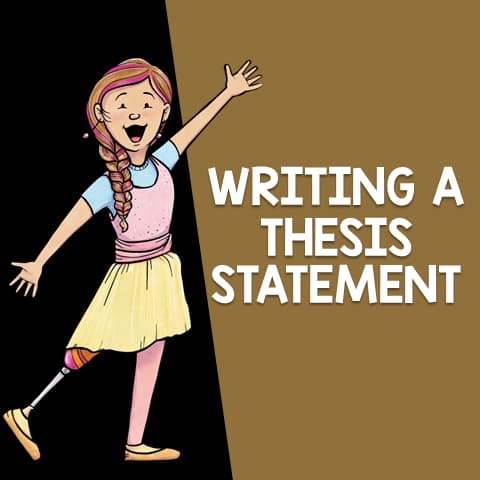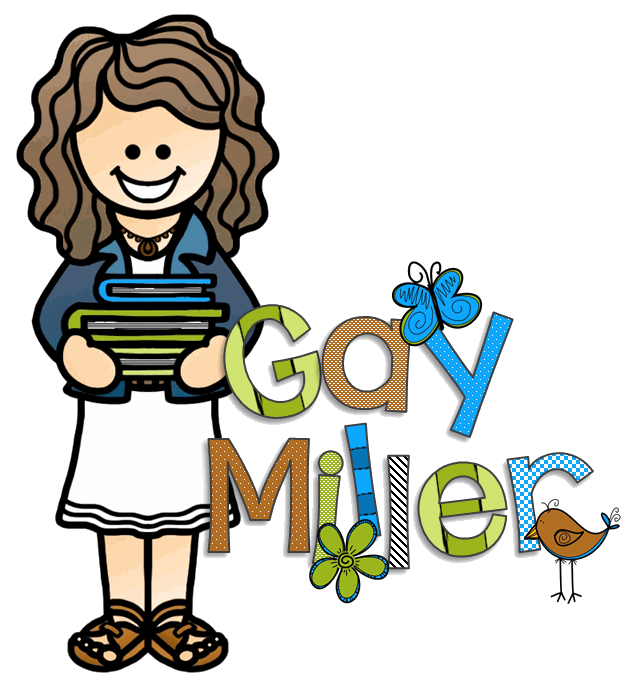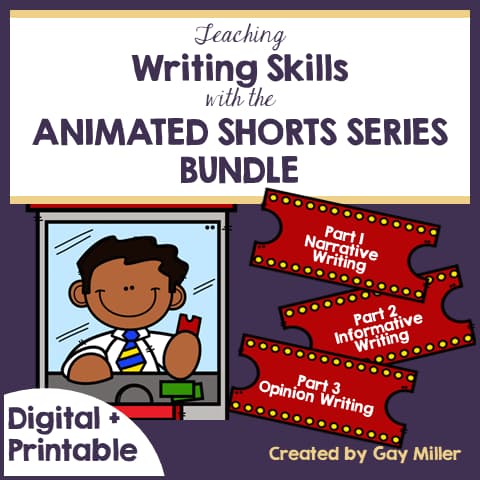
Teaching middle schoolers to write a thesis statement can feel like trying to convince them that comma rules actually matter or that no, emojis do not count as textual evidence. It’s one of those uphill climbs where clarity meets resistance, and every lesson feels like a mix of grammar boot camp. But once students crack the code, thesis writing becomes the backbone of their argument, and suddenly, those commas start falling into place too.
So grab a cup of coffee, and let’s talk about how to teach thesis writing in a way that doesn’t make your students groan… or you, for that matter.
Wait, What Even Is a Thesis Statement?!
Try asking your class this question and see what happens. You’ll get blank stares, maybe someone says “a topic sentence?” and if you’re lucky, one student will confidently reply, “It’s like… the conclusion, right?”
We’ve all been there.
The trick is to keep the definition simple and repeat it often:
A thesis is the main idea of your essay + your opinion about it.
(Think of it as the “spine” that holds the essay upright.)
When Do We Teach It?
Common Core doesn’t technically say “thesis statement,” but it absolutely wants students to introduce a topic, take a position, and organize their thoughts. So… yeah. Thesis.
Depending on your students, you can start as early as 5th grade, definitely by 6th. Just don’t expect miracles on Day 1. Or Day 5. Maybe Day 27.
My Go-To Thesis Statement Lesson
(That Doesn’t Put Everyone to Sleep)
Start with a Google Slides Presentation.

Use it to introduce what a thesis is, what it isn’t, and let students judge sample thesis statements as “good” or “bad.” (They love being judgmental when it’s actually allowed.)
Bonus Tip:
The slides are editable, so you can swap in topics your students actually care about—like “Should school lunches include fries every day?” instead of “The history of the steam engine.”
Graphic Organizers (a.k.a. Your Secret Weapon)

Here’s where the magic happens. I created three foldable organizers to help students practice and remember everything:
- What is a thesis statement?
→ Short, sweet, and packed with clear examples. - What to include (and what to avoid)
→ Spoiler alert: No “I believe” or “This essay will be about…” allowed. - Writing and fixing thesis statements
→ Students practice writing their own—and fixing ones that need a little help (kind of like thesis statement first aid).
Each organizer comes in multiple versions, so you can differentiate:
- fill-in-the-blank
- partially completed
- fully completed (for absent students or just plain tired ones)
Also: No scissors required. These foldables are print-and-go.
Examples Students Can Actually Understand

We all know examples matter, but if your model thesis statement is about city infrastructure, no one’s listening. These examples keep it real:
❌ Too broad: “Music is great.”
✅ Better: “Music therapy is effective in reducing stress and anxiety.”
❌ Too wordy: “There are a million reasons why we need more playgrounds…”
✅ Better: “Our school needs more playground space for student wellness.”
We cover:
- overly general statements
- wordy rambles
- titles in disguise
- unarguable facts
- thesis statements so vague they could be horoscopes
Easy Practice Ideas That Actually Work

- Quick Write Challenge: Give students a topic and ask for one sentence only—a thesis. Read a few out loud and have the class vote “thumbs up” or “needs help.”
- Highlighter Activity: Hand out sample thesis statements. Students highlight the subject in one color, the attitude/opinion in another.
- Anchor Chart: Keep a “Thesis Formula” poster up—Subject + Attitude = Thesis. Simple, visual, and helpful during writer’s block meltdowns.
Grab the Free Mini Lesson + Foldables

Everything mentioned here (slides, foldables, and even the original organizers for my fellow nostalgia lovers) is in a free download. You’ll get both printable and digital versions—because yes, some of us are still navigating hybrid teaching, and Google Drive is our second home.
If you’re fortunate, there might come a day when a student says, “Wait… I need a thesis here.” That will be your cue to shed a happy tear or maybe even do a little dance behind your desk!
See the product that inspired this post.
Are you looking for a fun way to teach writing skills? This series teaches narrative, informative, and opinion writing with animated short films your students are sure to love!




10 comments
Skip to comment form
BRILLIANT! I will use this for my freshmen who have a tendency to “forget” what the thesis IS and IS NOT!
nice blog
This is wonderful, thanks so much for sharing. I gave it to my fellow English teachers and we all use it and we are raving about how much the students enjoy it and learn from it.
Thank you so much.
This is so helpful. Thanks for sharing with us.
Hi. I´m from Colombia. Thanks a lot for everything.
Thanks for sharing!
Everything is very open with a really clear description.
It was definitely informative. Your website is very useful.
Many thanks for sharing!
Most thesis statements are one sentence (Unless you have a really long paper) but if you need to add more info use a semi colon or a coordinating conjunction to add more.
Thank you so much! This was very helpful!!